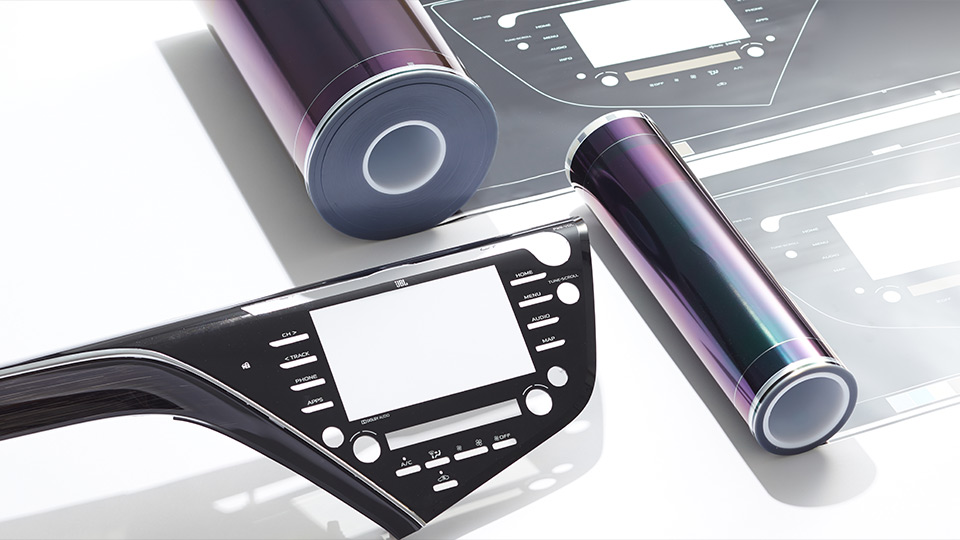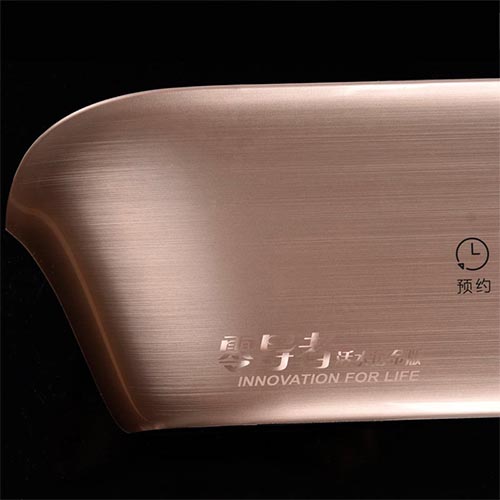In-Mold Decorations: Elevating Products With Accuracy and Aesthetic Appeals
In the world of item layout, the marital relationship of precision and visual appeal holds a vital placement in capturing consumer attention and loyalty. In-Mold Decorations (IMD) have actually become an innovative technique that not just elevates the aesthetic charm of items however also guarantees a meticulous integration of style components. The fusion of innovation and artistry in IMD opens a realm of opportunities for manufacturers seeking to differentiate their offerings in an affordable market landscape (In-Mold Decorations). As we explore the realm of IMD, a globe where accuracy fulfills creativity, a deeper understanding of the transformative effect on products awaits.
Benefits of In-Mold Decorations
This cutting-edge method involves putting a pre-printed movie or tag into the mold prior to injecting the molten plastic, resulting in a permanent combination of the decor with the product. The advantages of in-mold decors are manifold, starting with the capacity to attain high-resolution graphics and detailed designs that improve the visual allure of the final product.
Along with boosting aesthetic appeals, in-mold decorations additionally boost the resilience and durability of the layout as it comes to be an essential part of the product, instead of a superficial layer that can diminish gradually. The seamless integration of decorations through in-mold methods makes sure a constant and consistent look across all manufactured products, maintaining brand name uniformity and top quality criteria - In-Mold Decorations. In general, the advantages of in-mold designs make it a favored choice for makers aiming to elevate their items with accuracy and visual appeal
Accuracy in Design Integration
Accomplishing careful layout assimilation through in-mold decorations calls for an eager focus on precision and attention to information from the initial stages of the production procedure. The success of in-mold designs rests on the smooth assimilation of the style with the product, developing a unified and aesthetically enticing end outcome. Accuracy in layout combination entails aspects such as guaranteeing the accurate placement of the design within the mold, choosing the best products to achieve the wanted aesthetic, and maintaining consistency throughout the manufacturing process.
One key facet of precision in design assimilation is the alignment of the design with the product's attributes and shapes. In addition, focus to detail is important in preserving the high quality and consistency of the decorations across several manufacturing runs, making sure that each product meets the highest standards of precision and visual allure.
Visual Appeals and Visual Effect
With a focus on improving the general allure of products, the appearances and aesthetic effect of in-mold decors play an essential duty in exciting consumer focus. In today's open market, where consumers are flooded with selections, the visual charm of an item can be the differentiating aspect that affects purchasing decisions. In-mold designs supply an unique possibility to elevate the aesthetics of items by offering detailed designs, lively shades, and seamless coatings that standard decorating approaches might struggle to attain.
The visual effect of in-mold designs extends beyond plain aesthetics; it interacts brand high quality, identification, and attention to information. By incorporating visually enticing components right into item layout, suppliers can create a solid brand existence that resonates with customers on a subconscious degree. In addition, the precision and consistency provided by in-mold decoration methods guarantee that every item meets the greatest requirements of visual appeal, reinforcing brand name integrity and consumer count on.
Cost-Effectiveness of IMD

IMD minimizes the need for additional procedures like paint or labeling, conserving both time and resources. By incorporating the decoration directly right into the molding procedure, IMD gets rid of the added actions required for applying designs post-production. This structured process not only lowers labor costs yet likewise lessens the threat of mistakes or defects that might occur during second enhancing processes.
In addition, IMD boosts the resilience of decors by enveloping them within the item, making certain a longer-lasting and much more immune surface - In-Mold Decorations. This toughness translates right into decreased maintenance and replacement prices over the item's lifecycle, making IMD a cost-effective remedy for achieving premium looks i thought about this and aesthetic appeal in production
Durability and Durability
Integrating in-mold decors not only makes certain cost-effectiveness in manufacturing procedures but also significantly boosts item sturdiness and longevity. The process of in-mold decoration includes the application of graphics or decorative finishes throughout the molding procedure, producing a smooth and integrated style that is shielded within the item itself. This safety layer provided by in-mold decors offers as a shield versus damage, scratches, fading, and other ecological variables that could compromise the look and sturdiness of the product in time.
Products with in-mold designs are known for their resistance to abrasion, chemicals, and UV direct exposure, making them excellent for applications that need long-lasting efficiency and looks. Unlike conventional surface-applied decors that can remove or fade with usage, in-mold decors become an intrinsic component of the product, making sure that the style continues to be intact and vivid throughout the product's life-span. This longevity not just improves the overall quality of the item however additionally lowers the need for regular maintenance or substitutes, eventually providing long-lasting cost financial savings for consumers and makers alike.
Verdict

The benefits of in-mold decorations are manifold, beginning with the capability to achieve high-resolution graphics and comprehensive layouts that enhance the visual charm of the final item.In addition to enhancing aesthetic appeals, in-mold decorations also boost the resilience and longevity of the design as it comes to be an essential part of the item, instead than a superficial layer that can use useful link off over time. In-mold designs use an unique chance to boost the looks of items by giving complex layouts, vibrant colors, and seamless finishes that standard decorating approaches may have a hard time to achieve.
The procedure of in-mold design involves the application of graphics or decorative coatings throughout the molding process, producing a incorporated and smooth design browse around this site that is safeguarded within the product itself. Unlike conventional surface-applied designs that can peel off or fade with use, in-mold decors become an inherent component of the item, making sure that the design continues to be intact and vivid throughout the product's life expectancy.